All you need to know about Via Francigena
Historically, Via Francigena, or Vie Francigene, is a route that connected the territories dominated by the Franks, currently territories of France and Germany, to Rome in the medieval era. Today we are going to talk about all you need to know about Via Francigena. All ready? So, let’s go! Here at Your Travel to Italy with Ana Patricia you make the trip of your dreams!!! ALSO: see our “Accommodation in Italy – Tips for your holidays!”
Introduction
Passing through very special places, Via Francigena is a real gem! It passes through five countries (considering the Vatican): England, France, Switzerland and Italy. For obvious reasons, today we are going to talk about the Italian section of Via Francigena.
A little of history…
It all started with the pilgrimage to Rome to visit the tomb of the apostle Peter, in the Middle Ages, and the stretch became one of the three most important Catholic routes along with the Holy Land and Santiago de Compostela. Pilgrims came mainly from the land of the Franks, in the post-Carolingian era, and there they started to cross the Alps and enter Italy. The first documents that mention the existence of Via Francigena date from the 9th century and refer to a stretch of road in the rural area of Chiusi, in the province of Siena. The name Via Francigena is ‘officialized’ for the first time on Actum Clusio, an 876 scroll preserved in the Abbey of San Salvatore on Mount Amiata. South of Rome, Via Francigena is attested for the first time in Troia, at the Privilegium Baiulorum Imperialium of 1024.
The first description of the route
However, the first description of the route dates back to the 10th century and is the account of Bishop Sigerico, who made the return route from the pilgrimage of Rome, and arrived in the city to be received by the Pope (read also How to see Pope in Rome?). Sigerico’s testimony represents one of the most significant of this section, but it does not limit the many possibilities of other paths around Via Francigena. With the primitive route, from the 10th to the 12th century, you entered Italian territory through the hill of Gran San Bernardo, from where you descended to Aosta Valley and then to Ivrea, following to Vercelli.
But during the 12th century, another route became predominant: the one that entered Italy through the Val di Susa through the Colle del Moncenisio – and sometimes also passed through the Colle del Monginevro. This route was an alternative to the Gran San Bernardo gorge, on Mount Cenis and during the 12th century it was increasingly used, also, to transport goods that went to the great fairs of Champagne (France), where the presence of Italian merchants become increasingly consistent. The choice as a passage in the alpine zone was frequent at the time of Filipe Augusto, so much so that the area called ‘pre-alpine’ was considered the real road to France, the one that connected the country to Mount Cenis. The route became part of the immense route of roads and paths that marked Europe on pilgrimage and that brought together the great spiritual places of the time.
Curiosity
- The name “Francigena” indicates the set of routes of the so-called “Land of the Franks”.
How many Francigenas roads are there?
There is a saying that ‘all roads lead to Rome’ and, ironically, this gives us an idea, theoretically, of how many roads there are on the route. The reconstructed and improved itineraries for the modern pilgrimage are called Via Francigena di Sigerico, and were recognized in 1994 by the Council of Europe as a cultural itinerary and, ten years later, as a Cultural Itinerary. Among some of the most important paths, we find the Via de Colle del Monginevro a Vercelli, the Via degli Abati – between Pavia and Pontremoli – the Via del Volto Santo, which is between Pontremoli and Lucca, and the Via de Buonconvento to the Abbey of San Salvatore.
Today’s Via Francigena …
Via Francigena starts right in front of the Cathedral of Canterbury (England) and continues along the Pilgrim Way, reaching Dover where, by ferry or train, you cross the English Channel to reach Calais. In France, you pass through the regions of Nord-Pa-de-Calais-Picardie, Champagne-Ardenne and Franche-Comtè to then enter Switzerland and continue in Vaud, skirting Lake Geneva and Valais towards the Alps.
Arriving in Italy…
Arriving in Italy, through Passo Gran San Bernardo, you continue to leave the Aosta Valley, continue through the Piedmont region and arrive in lower Lombardy. On the Po River, with a river taxi, you go to Emilia Romagna and cross the Apennines descending from Passo de Cisa. From there, you cross the whole of Tuscany from Lunigiana and Chianti to the hills of Siena, arriving in the region of Lazio and discovering the beauty of Tuscia, while heading to Rome arriving at one of the most important destinations: St. Peter’s Basilica. The most famous Italian cities that Via Francigena crosses are: Passo Gran San Bernardo, Aosta, Ivrea, Vercelli, Pavia, Piacenza, Fidenza, Cisa Pass, Sarzana, Massa, Lucca, San Gimignano, Siena, San Quirico d ‘Orcia, Bolsena , Viterbo, Rome, Vatican City.
Curiosity
- Via Francigena covers 2,200 kilometers between all countries that pass!
- In Italy alone there are 1,000 kilometers of road. Italy is also the country with the most ‘stops’: there are 88 points of interest for pilgrims who make the journey.
- The journey, made by bicycle, takes around 15 days to complete; if you choose to do it on foot, the journey can take up to 30 days!
It is worth mentioning…
It is worth mentioning that after the ‘rediscovery’ – in the 1970s – of the Camino de Santiago de Compostela, it was also noted that Italy could use its own pilgrimage route, the Via Francigena. Like the Spanish route, part of the Francigena route was also partially on highways and state roads and, over time, the entire route of the main roads already used in the Middle Ages was traced. It is interesting that many pilgrims, after having traveled the Camino de Santiago, wanted to go to Rome on foot and, from there, to Jerusalem (using the naval routes of Puglia); this ‘movement’ gave rise to groups and one of them, the “Lovers of Francigena”, started to mark with ink and brush, the paths and paths used. Several attempts were made to recover the ‘original route’, however, for security reasons, some historical stretches were deviated so that pilgrims could walk without any problem.
Among Italian regions, Lazio has been the most active: in 2016 a major investment was made in Francigena in terms of resources and promotion of tourism, promoting a series of routes that have Rome as a support: especially, in the northern stretch that it comes from Tuscany , in addition to that in the south, on the Prenestina route that crosses Palestrina, enters the Sacco Valley and goes to Anagni – returning to Via Latina so that you can go to Benevento. There you will find the other route, Via Appia.
Recovering the old stretch of Via Francigena…
In the province of Lucca, several works were also carried out to recover the old stretch of Via Francigena; Lucca is one of the destinations of passage, departure, but also arrival for many pilgrims. With the great movement, it was also necessary to adapt the tourist structures to welcome pilgrims along the route. In this way, many parishes and religious institutions began to welcome accredited pilgrims on their way to Rome.
The Confraternity of San Jacopo di Compostella de Perugia manages two reception facilities spread across Via Francigena: one in Tuscany in Radicofani, the Spedale di San Pietro and Giacomo; and another in Rome: the Hospital of Provvidenza di San Giacomo and San Benedetto Labre, located in Testaccio, in the historic center of Rome, which is halfway between the Basilica of St. Peter and St. Paul.
When is the best time to visit Via Francigena?
The Via Francigena path is always open and free for circulation (*). The best months to explore this path are the months of May, June, September and October, but it is good to know that each season presents a different panorama and it is difficult to choose the most beautiful one!
(*) Good to know …
- The only section where you CANNOT pass during the winter is Passo Gran San Bernardo (from Bourg Saint Pierre to Saint Rhemy), which is closed from the beginning of October to the first days of June. It is closed because of snow, which is heavy in the region and can pose risks for those who do not know the region well. Another critical point in winter is the passage of the Apennines through the Passo de Cisa. So it is always advisable to check the weather conditions of the places you intend to pass BEFORE leaving the hotel.
Below, the Italian map where Via Francigena passes the route that can be done on foot or by bicycle:
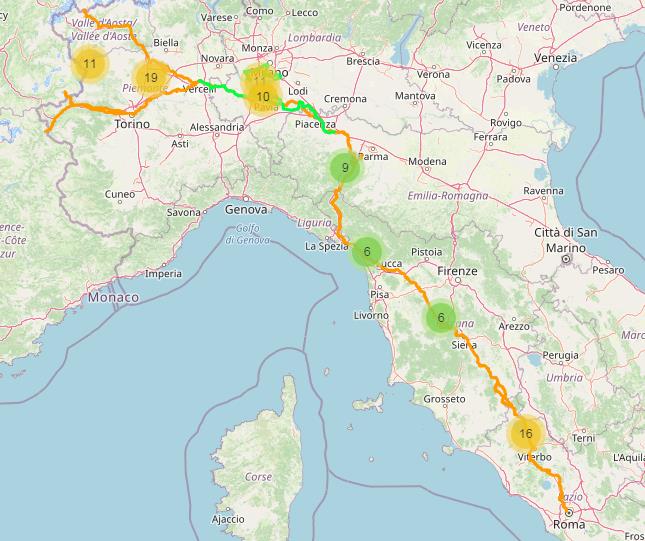
Useful Information
To learn more about the routes of Via Francigena, you can access the official website of the project by clicking here; you can also access this other website to have access to information on itineraries, maps, indication of where to sleep, how to assemble the backpack for the trip and much more! It is very complete and worth, A LOT, a visit!
Gold Tip
- The Via Francigena circuit also offers an app. Just go to your mobile app store and type Via Francigena in the search.
Conclusion
All you need to know about Via Francigena. One of the world’s pilgrimage routes passes through Italy and, you can be sure, it is unforgettable! And if you feel insecure, have no time, and need help to organize your trip, don’t hesitate to contact me! I will love to help you make your dream trip to Italy come true. And how can I do that? Keep reading this post until the end and you will understand how we make your life and your trip much easier.
Did my post help you? If so, be sure to post your comment below, but if you still have questions just send me a message I will answer you as soon as possible!
An Extra Help for your Trip
The best content from Your Travel to Italy!
Learn more about our tours in Italy right now!
- What to visit in Italy in 10 days?
- The ten must-see places in Tuscany?
- The best tips to save on your trip to Italy?
- What are the 10 most visited cities in southern Italy?
- Airports in Italy? How to get to your hotel? (Venice, Milan, Rome, Florence)
- What to do in 1/2/3/4 days in the main Italian cities?
- The best tips on food in Italy (wines, typical food, enogastronomy tours)
- How to get from Fiumicino Airport to Rome downtown?
- Your Travel to Italy: 10 tips for traveling through Italy!
Best regards from Italy
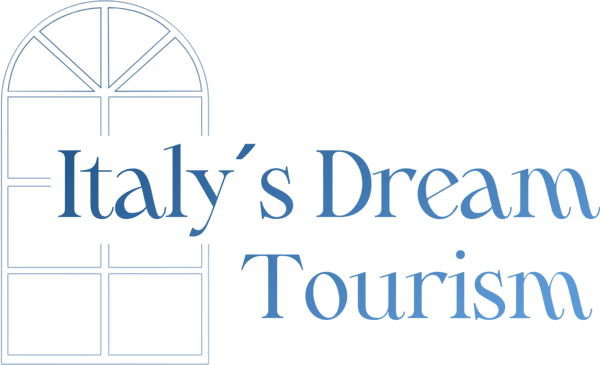
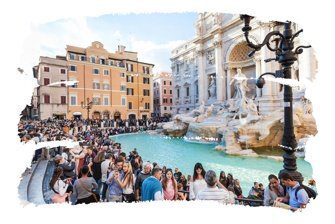
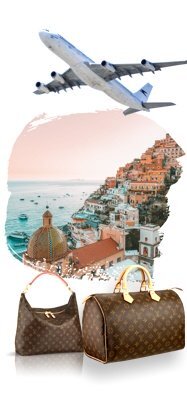
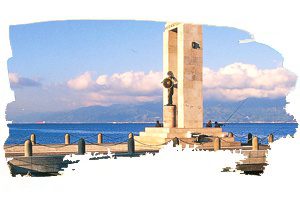

 Save money!
Save money!